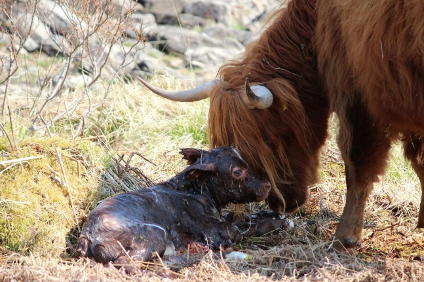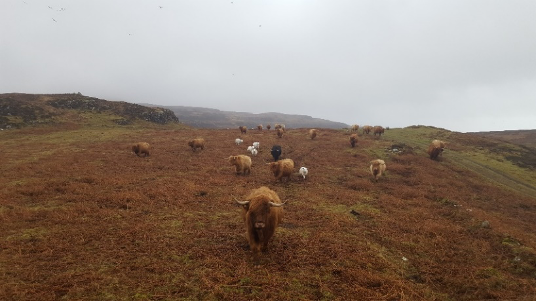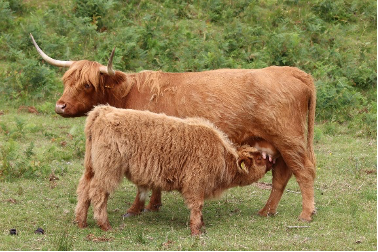Extensive farming study on Mull
Highland Cattle are one of the most recognisable breeds for extensive farming systems, especially if you have access to hills and moors over which they can range.
Iain MacKay of Cnoc na Sith Fold, Torloisk Farm on the Isle of Mull utilises the attributes of the traditional Highland cow to the maximum, to produce cross breds for the store markets of Northern Scotland.
The enterprise consists of 35 Highland/Simmental cross cows and 20 pure Highland cows, all of which are wintered outside. Torloisk cattle have Elite Health status and operate a closed replacement system.
The farm consists of 7,900 acres of tenanted land of which only 79 acres is semi-improved, with the remainder classified as the poorest land in Scotland with extensive swathes of bracken on the drier areas. Rainfall is 90 inches a year and it rains 75 days out of every hundred.
What traits do the cattle need?
Hardiness to thrive out on the hill
Good locomotion for difficult terrain
Large rumen to utilise poor roughage
Longevity for a long healthy life
Easy fattening to prepare for winter
Easy unsupervised calving on the hill
Quiet temperaments
Good maternal traits for Mum to produce a good calf
The farm is a Scottish Monitoring Farm and everything is measured. These records help to inform culling regimes – anything not having the required traits being culled. Cattle are weighed and body condition scored at least four times per year.
Feeding and management
Cattle are hill grazed and have trace element bolus in May. They are fed cow cobs during the winter and haylage as required, depending on the weather and extent of grazing available.
They are treated for liver fluke, gut and lung worm, mites, lice and ticks, and calves are treated for ecto-parasites within three days of birth.
Why cross Highlanders?
The Pedigree Highland market is fairly saturated and demand for pure-bred commercial animals or lighter pedigree Highlanders from hill farms is low
Higher demand for commercial cross animals leads to higher sales value of cross calves
Gives access to a new market and more buyers – diverse market portfolio spreads risk across more enterprises/outlets
It adds value to cows that are of lower pedigree quality/potential
Hybrid vigour helps at birth and can increase growth rates – less labour requirement and heavier calves
Introduce hardiness and longevity into commercial/continental breeds
Simmental X calves
Excellent hybrid vigour, quick on their feet after birth and onto udder within minutes
High growth rates, heavy calves at sale
Good demand for private and auction sales, also for young calves (min. ~200kg)
Higher ppkg value
But
More demand on mother – provide extra feed for dams or creep feed calves
Bigger calf – ensure that the dam has sufficient pelvic capacity
Whitebred X calves
Excellent hybrid vigour, quick on their feet after birth and onto udder within minutes
Finer-boned, slender calf at birth and less demanding on mother – suitable for first calvers
WSH adds larger frame and milkiness to hardy HI – good native crosses
Excellent flavour of meat
But compared to large natives (AA or SH) and continental crosses
Lower market value of and demand for steers
Lower weight gains and weaning weights
Adding value to pure Highlanders
Beef boxes and farm gate sales
56% kill out rate
Physical performance on Mull 2013-2019
Markets explored to date
Conclusions
The Highland cow is perfectly suited for harsh environments
Crossing with Simmental outperforms every other enterprise but requires higher inputs
Whitebred and Shorthorn crossing not as profitable as Simmental X but easier on cows and still higher profit margin than Highlanders
Crossing in general adds value
Direct sale of extensively finished Highland beef helps increase return on pure Highlanders but requires more labour and time




